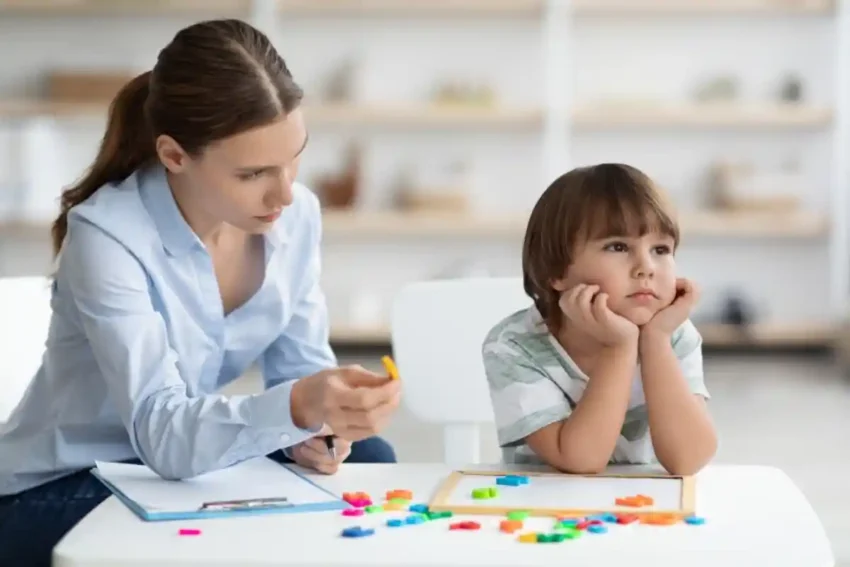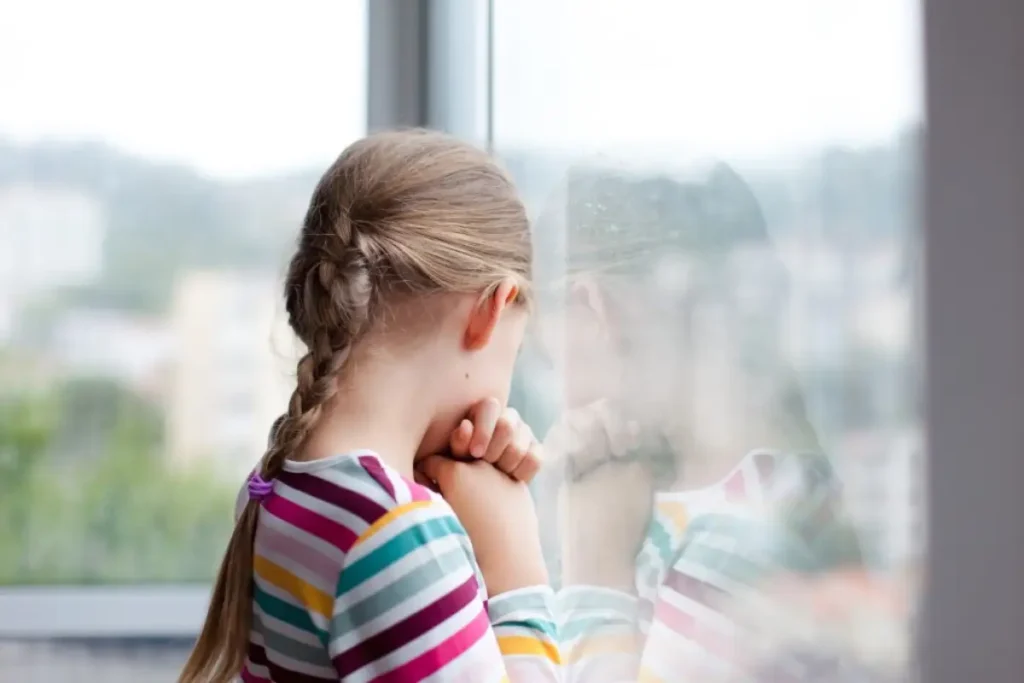Understanding ADHD and Anxiety in Children: A Helpful Guide

Attention Deficit Hyperactivity Disorder (ADHD) and anxiety are common in children than many people realize. Both are mental health conditions that can interfere with daily life, from schoolwork to friendships. However, they’re often misunderstood or seen as separate problems.
The truth is that they frequently overlap, creating unique and complex challenges. Families and teachers who want to provide the proper support need more than surface-level advice. Stronger mental health support starts with a clearer understanding of how these conditions interact, how they shape a child’s world, and what can be done to help.
Contents
- 1 The Overlap Between ADHD and Anxiety
- 2 Early Signs Parents and Teachers Might Miss
- 3 Why the Two Conditions Commonly Coexist
- 4 The School Environment: Amplifier or Ally?
- 5 The Emotional Toll on the Child
- 6 Rethinking Coping Strategies
- 7 Family Dynamics and Home Life
- 8 Looking Beyond the ‘Problem Child’ Lens
- 9 When and How to Seek Professional Help
- 10 Building a Long-Term Support System
- 11 To Conclude
The Overlap Between ADHD and Anxiety
ADHD and anxiety can look surprisingly similar. Restlessness, poor focus, irritability, and sleep troubles appear in both. Yet the driving forces differ. Children with ADHD often act on impulse, while those with anxiety hesitate because of constant worry. When the two come together, a child may feel pulled in opposite directions.
It’s not uncommon for a child to be treated only for one condition. A student who struggles to finish work may be called inattentive without anyone noticing that fear of failure is also at play. Others may be described as anxious when their distraction stems from ADHD. Overlooking the combination can delay meaningful support and even worsen both issues.
The overlap creates a kind of ‘third profile’ that doesn’t neatly fit either diagnosis. This blended pattern explains why some children seem calm on the outside but are restless inside, or why others bounce between nervous avoidance and impulsive decisions. Recognizing this mixture is the first step in giving them the right help.
Families can seek child-focused care at reputable establishments. Examples include children’s hospitals, university-affiliated clinics, and accredited community mental health centers. These services typically offer evidence-based care delivered by pediatric teams trained to work with kids. You can learn more by checking out their official website for information on their services.
Early Signs Parents and Teachers Might Miss
Some signs of ADHD and anxiety in children are easy to spot. Hyperactivity, constant worry, or avoidance of new activities stand out. But many early clues are subtle.
- ADHD markers include jumping quickly between hobbies, an unusually intense curiosity, or difficulty handling free, unstructured time.
- Anxiety markers include perfectionism, unexplained stomachaches, or the need to over-plan simple activities.
Children with both conditions may not always show disruptive behavior. In fact, some mask their struggles by working extra hard to appear calm and capable. The effort to hide distress often goes unnoticed until it builds into bigger challenges. Being alert to these quieter signals can make a significant difference for adults.
Why the Two Conditions Commonly Coexist
The link between ADHD and anxiety in children isn’t just a coincidence. Both involve brain areas that regulate focus, emotional regulation, and threat response. When those systems are out of balance, symptoms of each condition can emerge together.
Genetics also plays a role, with it being possible to inherit ADHD. Families often pass on traits for both conditions, raising the odds that they’ll appear in the same child. Beyond biology, the environment matters as well. Struggling with ADHD at school or home often leads to repeated criticism and stress. Over time, that stress develops into anxiety tied to performance or social anxiety in peer settings.
This type of ‘secondary anxiety’ is prevalent. It doesn’t come from an anxious temperament but from the repeated experience of living with untreated ADHD. The cycle is self-reinforcing, making early recognition and support critical.
The School Environment: Amplifier or Ally?
Schools can either ease or intensify the struggles of children with both ADHD and anxiety disorders. Structured schedules, transitions between classes, and constant evaluation often magnify their difficulties. Being compared to peers who work more smoothly adds to the pressure.
Teachers’ perceptions strongly shape how children are treated. A child labeled ‘disruptive’ may be disciplined harshly, while a child labeled ‘shy’ might be overlooked. Both labels miss the full picture. Effective classrooms use strategies that support different learning needs, such as flexible seating, movement breaks, and visual schedules.
There’s also a social dimension. Even when schools provide accommodations like quiet testing rooms, children may feel singled out. Without efforts to reduce stigma, support can unintentionally create more anxiety. Building acceptance among classmates is as important as providing tools.
The Emotional Toll on the Child

Living with ADHD and anxiety in children takes an emotional toll that isn’t always visible. On the inside, many feel broken or fear they’re letting adults down. Repeated corrections and reminders shape a self-image that leans toward shame.
Friendships are often complicated. Impulsivity can cause misunderstandings, while worry makes it hard to repair those relationships. Some children withdraw, deciding it’s safer not to try. Others push too hard for acceptance and feel crushed when things go wrong.
At the core, there’s a constant negotiation between wanting to act and fearing the outcome. The push-and-pull is exhausting, and without acknowledgment, children may internalize the belief that they’ll never measure up. Emotional support needs to be just as strong as academic help.
Rethinking Coping Strategies
Cognitive behavioral therapy, ADHD medication, and school support plans are the most common strategies, but they’re not the whole story. Children benefit from practical, everyday tools that bring relief and confidence. Effective treatment options should be customized to the child’s needs and context.
- Micro-successes: Small, achievable goals that provide a steady stream of wins. These build resilience and prevent the cycle of failure from taking over.
- Body-based activities: Stretching, balance games, and rhythmic movement can calm the nervous system while sharpening focus.
- Creative outlets: Visual arts therapy, music, or storytelling help children process complex feelings that words cannot fully express.
One of the most effective strategies combines structure with choice. Predictable routines give children stability, while options within them give them a sense of control. This balance supports both attention and emotional well-being.
Family Dynamics and Home Life
Families live inside the ripple effects of ADHD and anxiety in children. Parents often feel frustrated at the lack of organization or constant worry, which can heighten the child’s own stress. The cycle feeds itself, leaving everyone drained.
Siblings may also struggle, either resenting the extra attention given to one child or taking on a caretaker role. Both responses affect family harmony. Acknowledging siblings’ needs and giving them space to share feelings helps restore balance.
Simple household changes can lower stress for everyone. Shared calendars, clear routines, and family rituals create predictability. Just as important, parents who model healthy stress management, through calm problem-solving or taking breaks, give children a living example of resilience.
Looking Beyond the ‘Problem Child’ Lens
Too often, children with ADHD and anxiety are seen only in terms of what they cannot do. A shift to a strength-based perspective reveals traits that can become powerful assets.
Creativity, quick thinking, empathy, and persistence often flourish alongside their struggles. Anxiety may bring heightened awareness of detail, while ADHD sparks novel connections between ideas. When properly guided, these qualities turn into genuine advantages.
Adults play a vital role by naming and encouraging these strengths. Instead of constant correction, children benefit from feedback that highlights their potential. This reframing helps them see themselves not as broken but capable individuals with unique contributions.
When and How to Seek Professional Help
While everyday strategies help, professional guidance is often necessary. Warning signs include frequent panic attacks, aggressive outbursts, withdrawal from social life, or a sudden drop in school performance. These indicate the child is overwhelmed beyond what home or school can manage alone.
Professionals who may help include pediatricians, child psychologists, occupational therapists, and school-based specialists. Comprehensive evaluations often require input from multiple adults, including teachers, to capture the full picture.
Parents can prepare children for assessment by framing it positively. Rather than presenting it as a search for ‘what’s wrong,’ it can be described as learning how their brain works. This approach reduces fear and encourages cooperation.
Building a Long-Term Support System
Support for ADHD and anxiety in children isn’t a one-time fix. It requires an ongoing network that adapts as the child grows. Open communication between parents, teachers, and clinicians ensures consistency and prevents gaps.
Strategies such as moving from elementary to middle school must evolve at transition points. Older children face new demands for independence, and supports that worked before may need adjusting. Preparing ahead for those changes avoids setbacks.
Resilience is the long-term goal. Children who learn to recognize when they’re overwhelmed and ask for help develop critical life skills. Peer mentorship programs, where older students with similar experiences guide younger ones, offer encouragement and reduce stigma. These community connections make a lasting difference.
To Conclude
ADHD and anxiety in children create challenges that touch every part of life, from school to home to friendships. The overlap between the two conditions can mask or intensify symptoms, making early recognition essential. Families, teachers, and professionals all have roles to play in building an environment that reduces stress and nurtures growth.
Children are given the chance to thrive rather than be defined by their struggles by focusing on strengths, creating predictable routines, and encouraging resilience. Each child deserves to be seen as more than a set of behavioral symptoms, but as an individual with both challenges and remarkable potential.



